[ad_1]
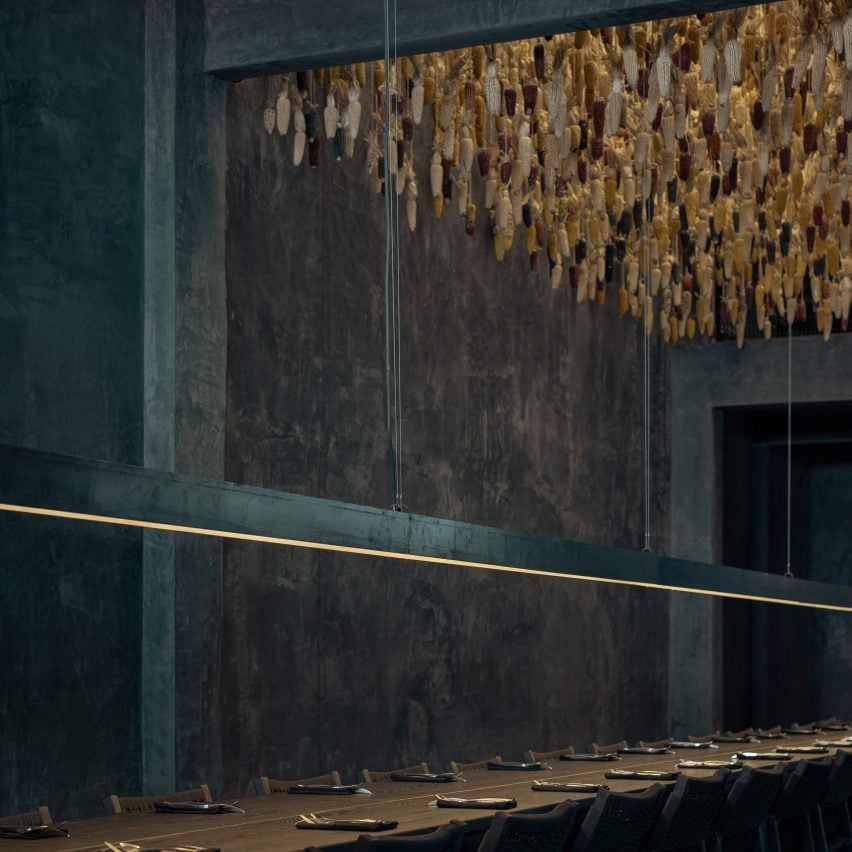
Mexican architects ODAmx and Rubén Valdez have designed a restaurant with an ash-coloured interior inside a former mechanic’s workshop in Guadalajara.
Now located in the Mexican city’s Santa Tere neighbourhood, Xokol began in 2017 within a small space that housed just four tables and room for 16 diners.
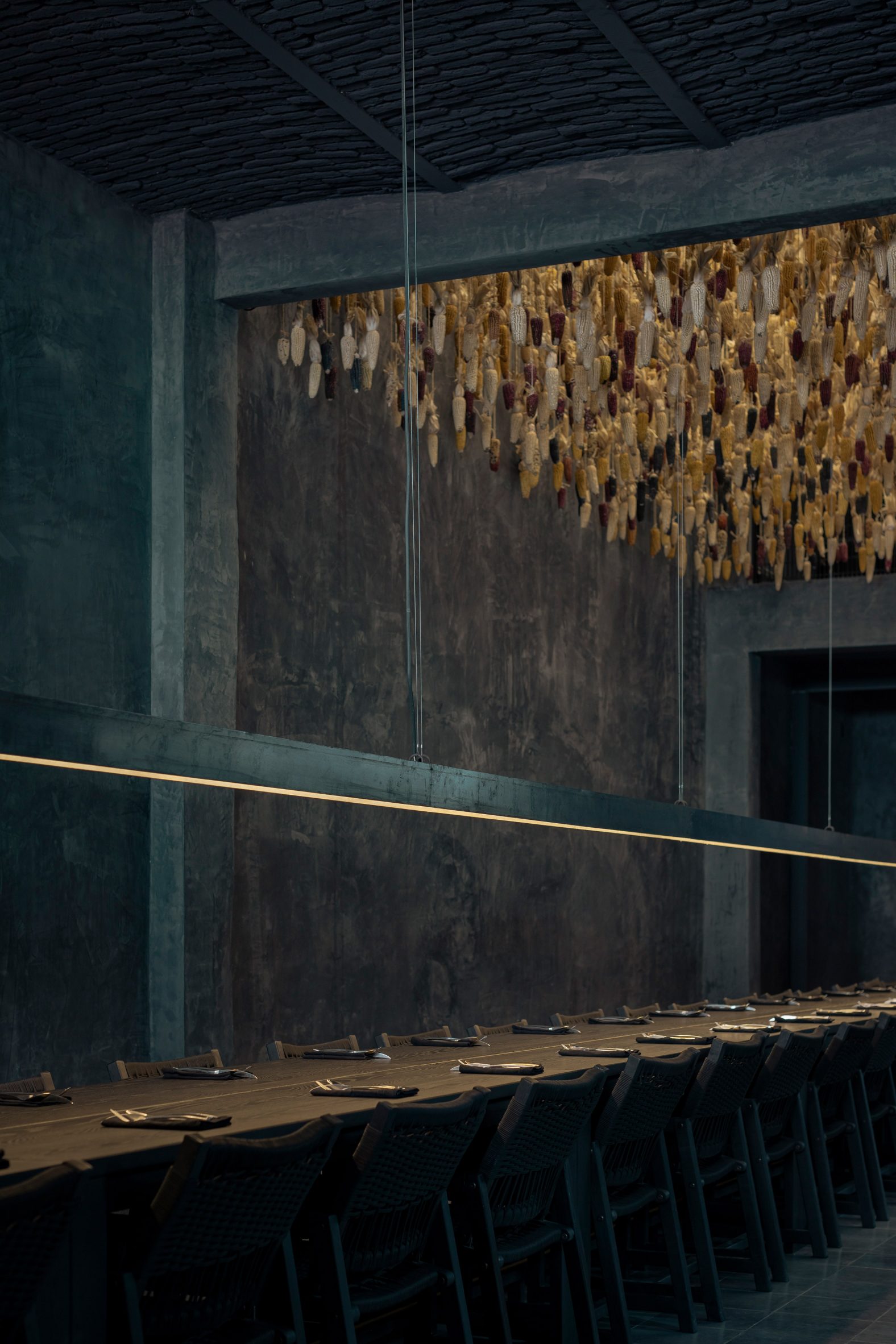
In 2020, the restaurant relocated to this larger building, where the aim was to preserve as much of the intimacy and connection between the diners and chefs as possible.
“Xokol is a restaurant in which the act of eating becomes a collective ritual,” said ODAmx and Rubén Valdez in a joint statement. “The architecture of the space acts a catalyst for the reinterpretation of Mexican culinary traditions and a communal dining experience in which the boundaries between diners, staff and food preparation are non-existent.”
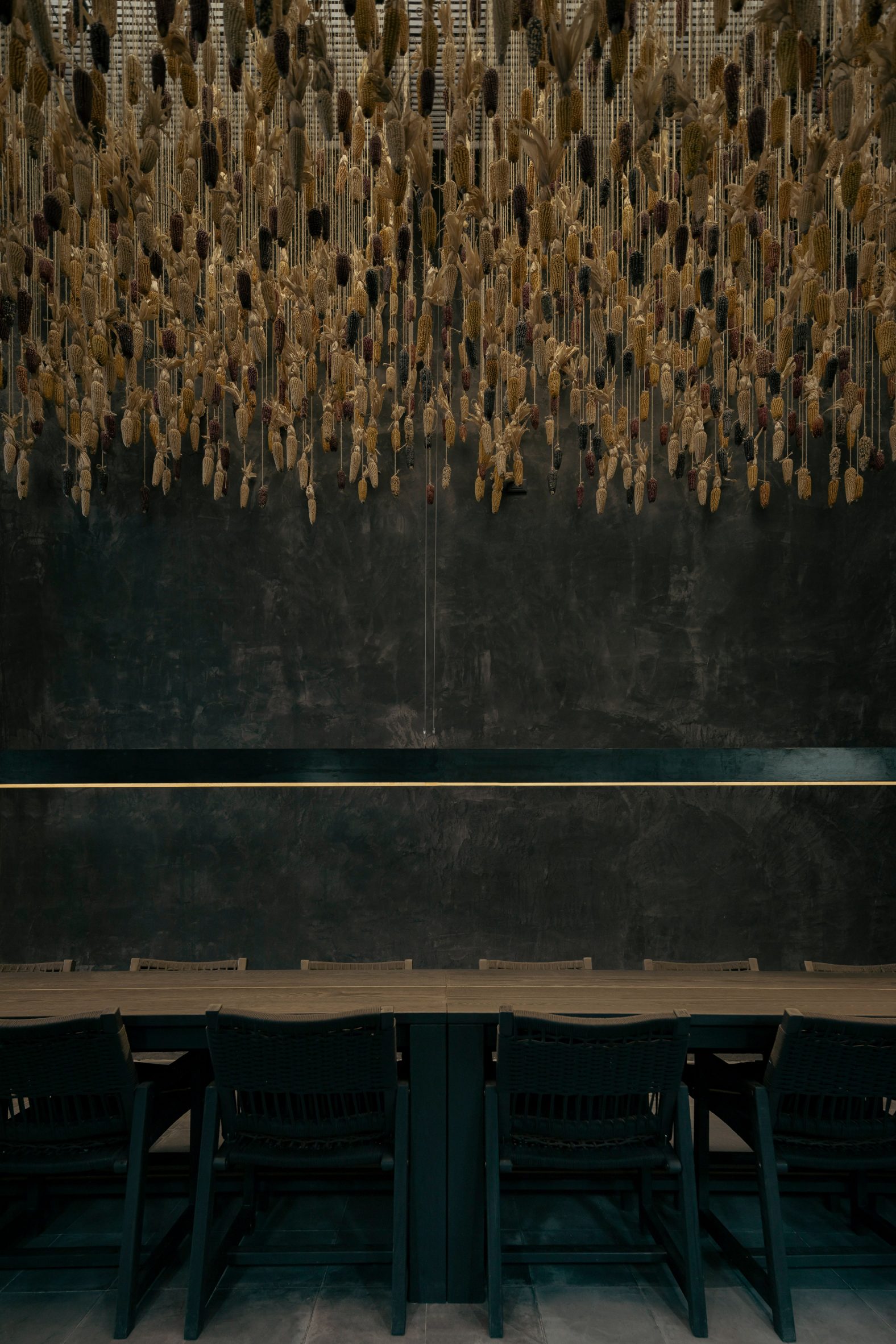
The restaurant’s interior has a minimalist, monastic quality thanks to the dark grey stucco covering the walls and ceiling, and the black clay comal ovens on full display in the open kitchen.
“These muted tones foreground the naturally rich colour palettes of the dishes,” the architects said.
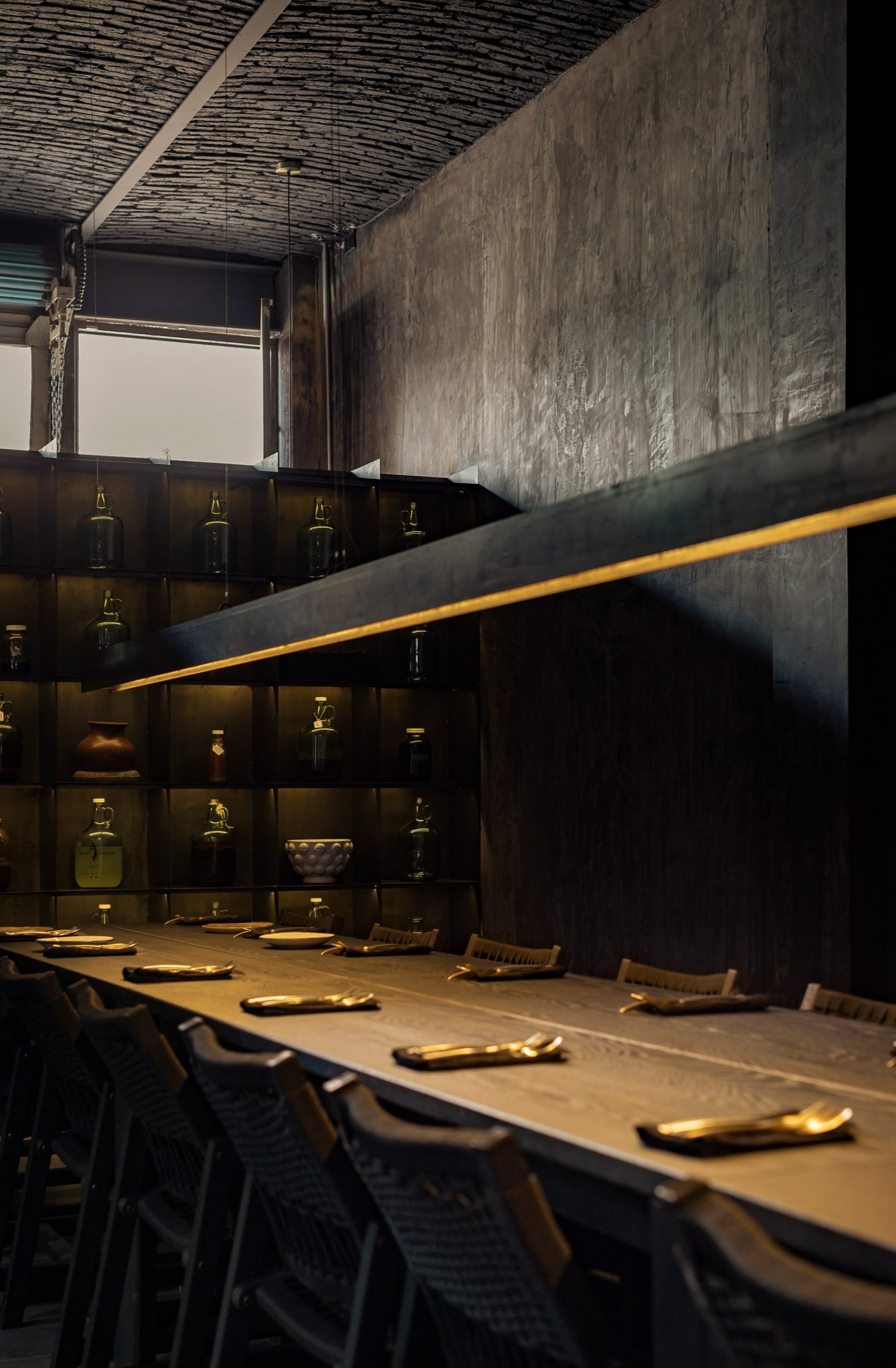
The concrete workshop building’s exterior was left largely unchanged, aside from the layers of tall panels of steel added across the garage-door entrance to guide guests inside.
A 15-metre-long oak table runs the length of the double-height interior, enabling 48 covers to be seated at once and share the experience.
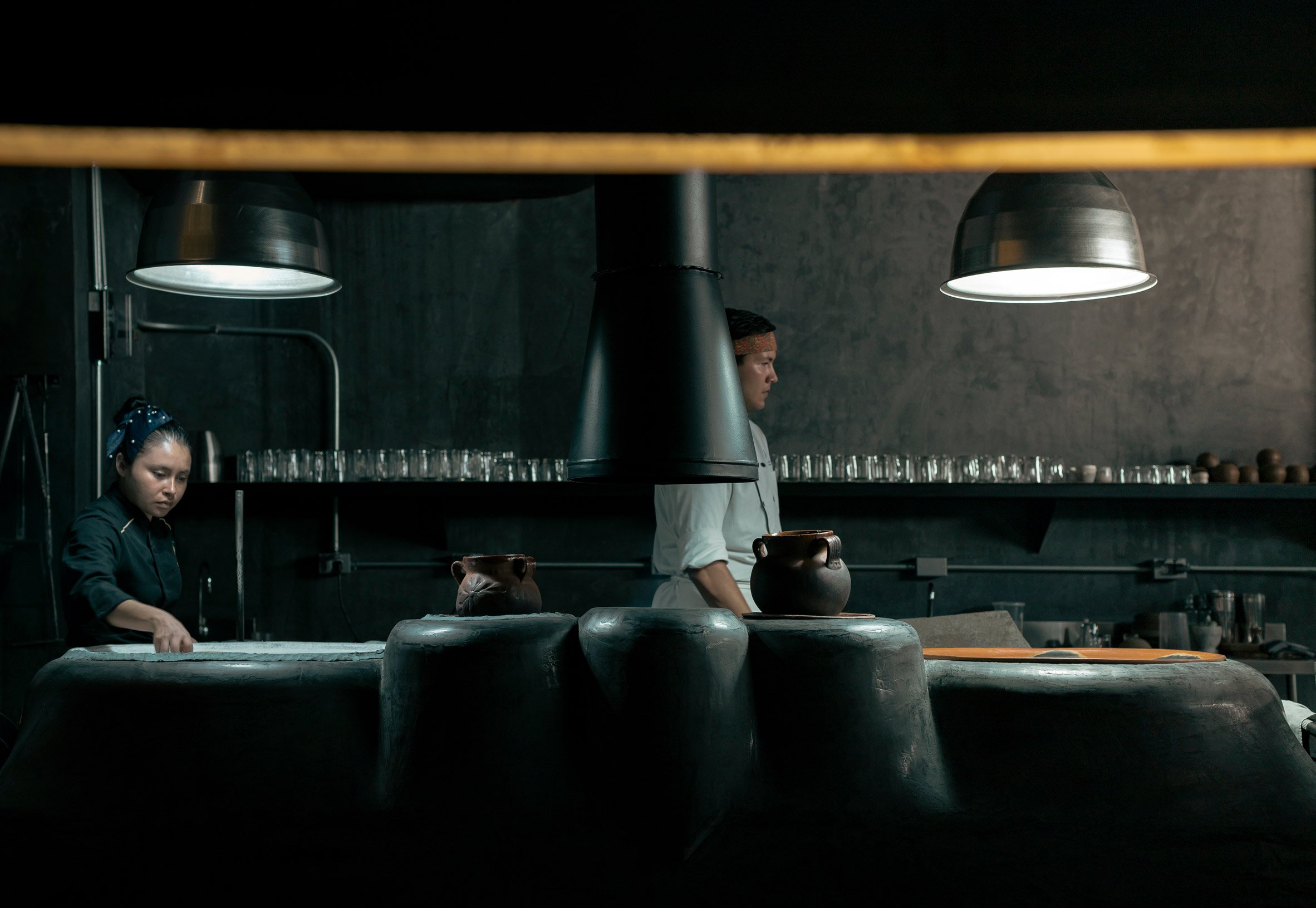
Suspended above the table is an industrial pendant light that stretches its entice length, emitting a soft glow over the place settings.
Over the centre of the dining area, a large skylight is covered by a metal grill from which hundreds of corn cobs hang – providing the only hint of colour in the otherwise monochrome restaurant, besides the dishes served.
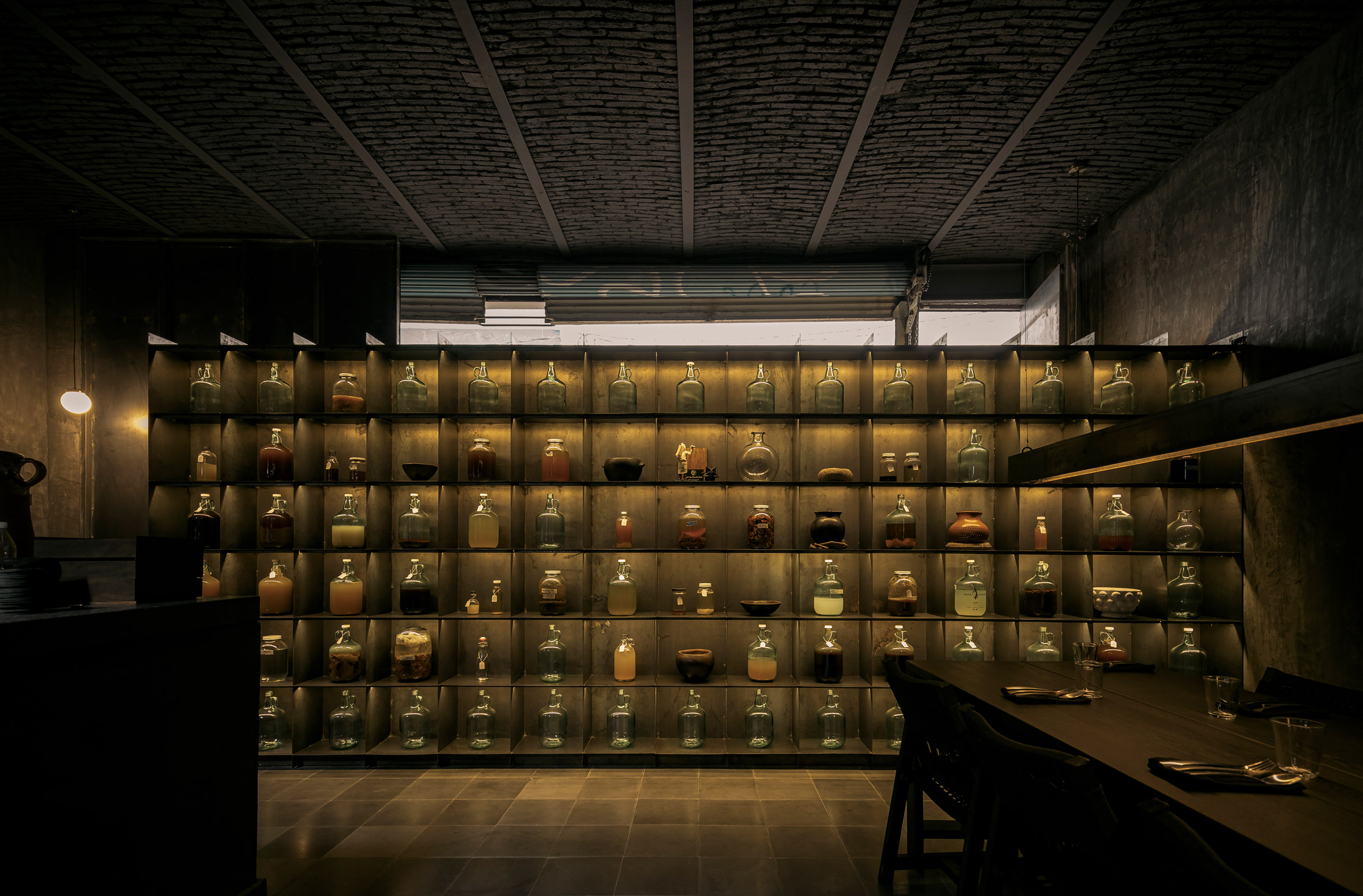
The kitchen runs alongside the table on the other side of the building, towards the back where a grid of shelves contains jars for fermenting ingredients.
A staircase winds around a totemic stone sculpture by local artist José Dávila, up to a mezzanine level that overlooks the dining area.
All of the materials used for the project were sourced locally, and the dining table, pendant light and shelving were fabricated by Guadalajaran artisans.
“Since its beginnings, Xokol has aimed to conserve and recover the Mazahua culinary traditions and share them with a broader public in a contemporary manner,” said the architects.
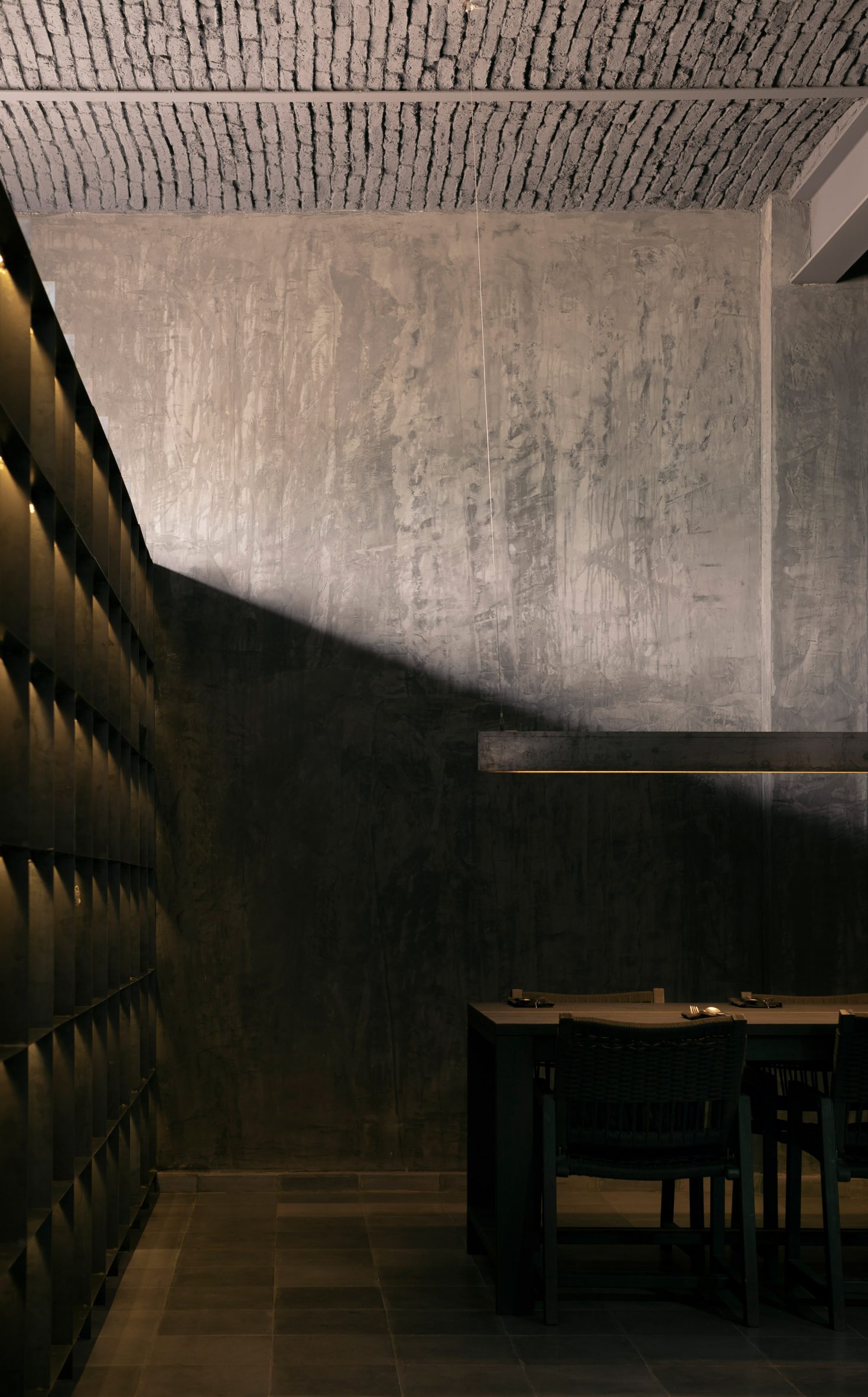
“The architectural project acts as an enabler for such goal where every design decision has been thought to achieve it,” they added.
Xokol is shortlisted in the restaurant and bar interior category of Dezeen Awards 2023, along with a Toronto seafood restaurant by Omar Gandhi Architects, a vaulted brick brewery taproom in Poland by Projekt Praga and three more projects.
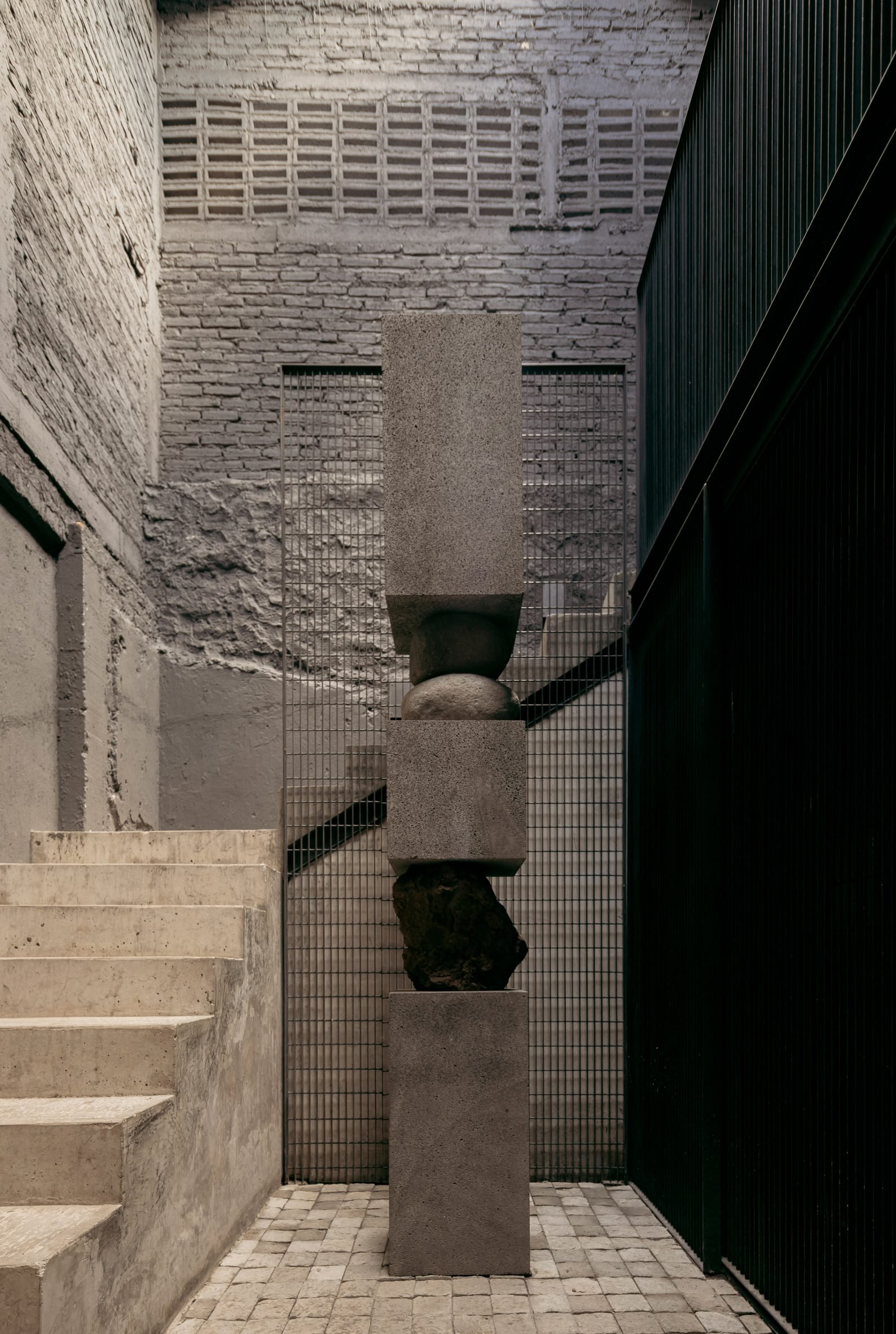
Guadalajara, Mexico’s second-largest city, is a hotbed for architectural talent and has a thriving food scene.
Other restaurants with impressive interiors in the city include Veneno, designed by Monteon Arquitectos Asociados to resemble an archeological site, and Hueso, which Cadena + Asociados lined with thousands of animal bones.
The photography is by Rafael Palacios.
Project credits:
Architecture: ODAmx and Rubén Valdez
Carpenter: Joselo Maderista
Artwork: José Dávila
The post Xokol restaurant by ODAmx and Rubén Valdez celebrates "collective ritual" of eating appeared first on Dezeen.
[ad_2]
www.dezeen.com










